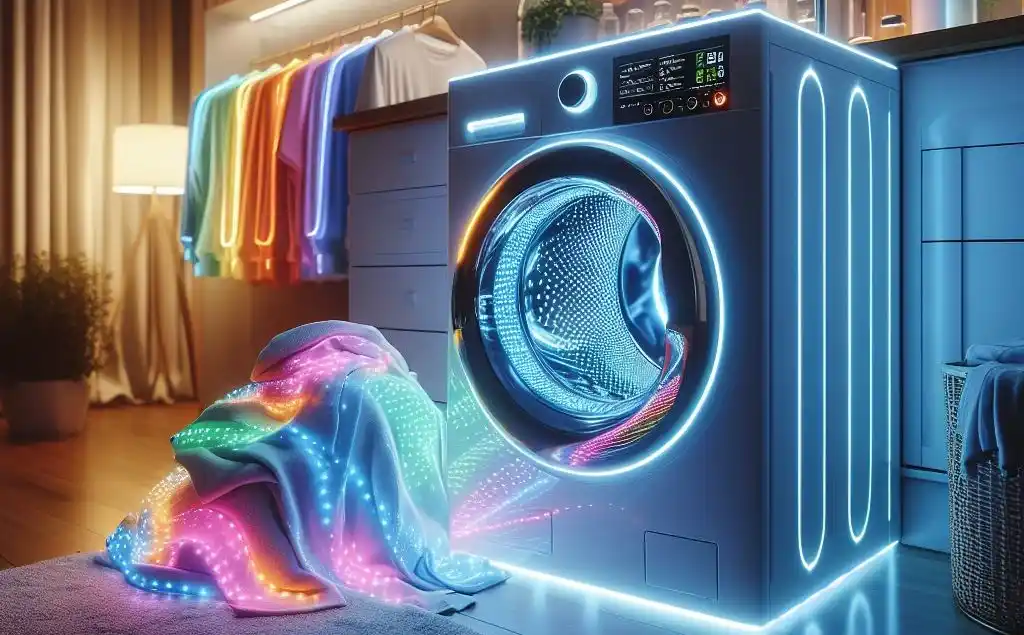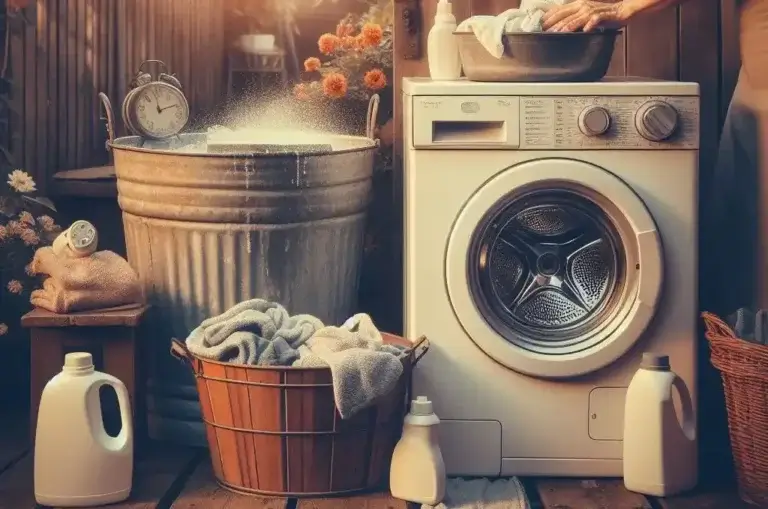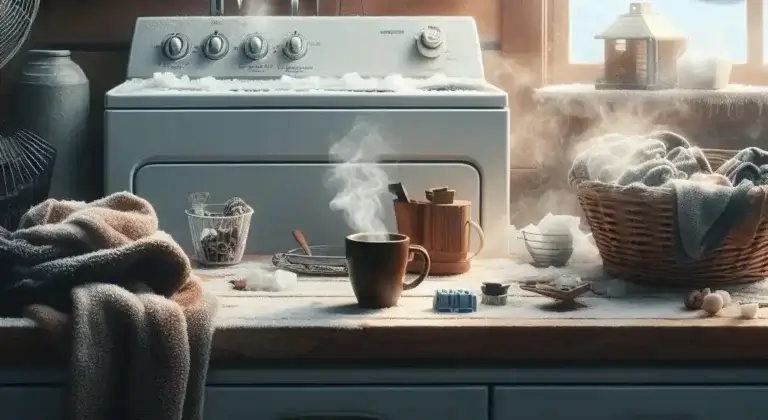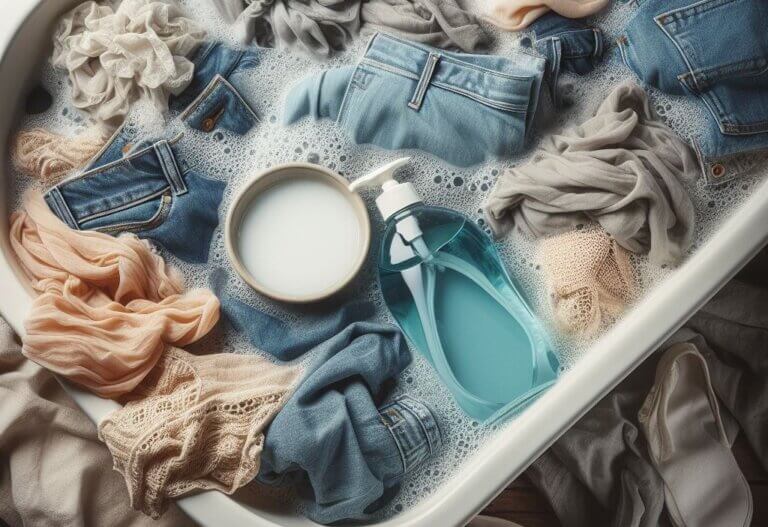How to Wash Clothes with LED Lights: A Guide for a Sparkling Wardrobe
In the ever-evolving world of fashion, LED lights have become a trendy addition to clothing, allowing you to light up your outfits and create a dazzling effect. However, washing clothes with LED lights can be a daunting task, as improper care can damage both the clothing and the lights.
In this comprehensive guide, we’ll cover everything you need to know about how to Wash Clothes with LED Lights, from preparation to proper maintenance, ensuring that your light-up garments stay bright and functional for many years to come. Whether you’re a fashion enthusiast or someone who simply loves adding a touch of sparkle to your wardrobe, this article is worth reading, as it provides valuable insights and tips for keeping your light-up clothes looking their best.
Table of Contents
Preparation: Understanding Your Light-Up Garments

What are Light-Up Clothes?
Light-up clothes, also known as LED clothing or illuminated apparel, are garments that feature LED (Light-Emitting Diode) lights integrated into the fabric. These lights can be programmed to create various patterns, colors, and effects, adding a unique and eye-catching element to your outfit. From sweaters and shirts to accessories like hats and shoes, light-up clothing offers a world of possibilities for expressing your personal style.
Components of Light-Up Clothes
Light-up clothes typically consist of the following components:
- LED lights: These are the small, energy-efficient lights that create the illumination effect. They are often sewn into the fabric or attached using conductive threads.
- Wiring: Thin, flexible wires connect the LED lights and transfer power from the battery pack to the lights. These wires are carefully integrated into the garment to maintain flexibility and comfort.
- Battery pack: A small, removable battery pack powers the LED lights and is often hidden in a pocket or an inconspicuous area of the garment. It is essential to remove this battery pack before washing your light-up clothes.
Checking the Care Label
Before washing your light-up clothes, it’s essential to check the care label for specific instructions. Different garments may have varying washing recommendations, and following the manufacturer’s guidelines is crucial to prevent damage. The care label will also provide information on the type of fabric, which can help you determine the appropriate cleaning methods.
Removing the Battery Pack
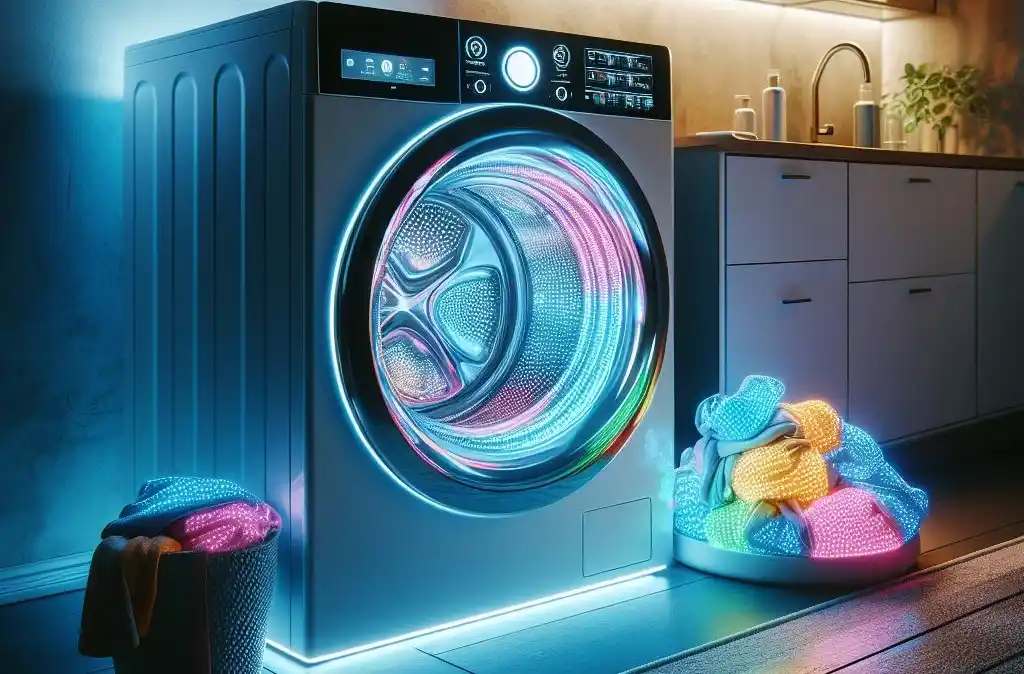
Why Remove the Battery Pack?
Removing the battery pack is a crucial step before washing your light-up clothes. Leaving the battery pack in during the washing process can lead to several issues, such as water damage, short-circuiting, and potential safety hazards. Water exposure can cause corrosion and permanent damage to the battery pack and electrical components.
How to Remove the Battery Pack
To remove the battery pack, follow these simple steps:
- Locate the battery pack, which is typically hidden in a pocket or an inconspicuous area of the garment. Some garments may have a dedicated opening or compartment for the battery pack.
- Carefully detach the battery pack from the wiring, ensuring not to pull or stretch the wires excessively. Gently disconnect any connectors or clips holding the battery pack in place.
- Once the battery pack is disconnected, store it in a safe, dry place until it’s time to reconnect it after washing.
How to Wash Clothes with LED Lights
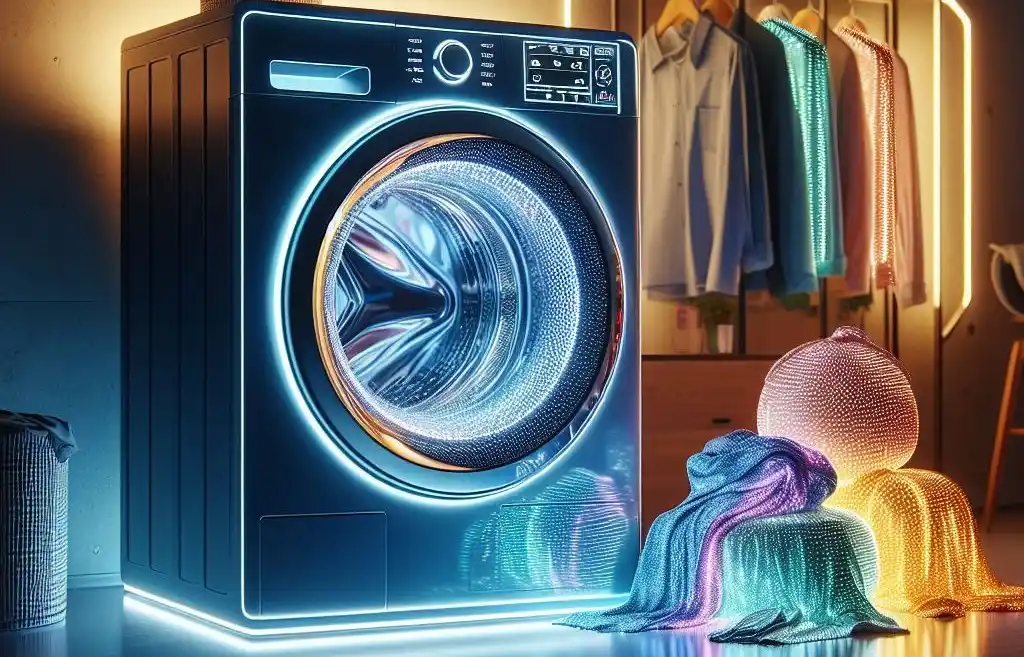
Hand Washing vs. Machine Washing
When it comes to washing clothes with LED lights, hand washing is generally recommended. Hand washing is gentle and allows you to control the water temperature and agitation, reducing the risk of damage to the lights and wiring. However, some light-up garments may be machine washable, but it’s essential to follow the care label instructions carefully.
Hand Washing Light-Up Clothes
To hand wash your light-up clothes, follow these steps:
- Fill a basin or sink with lukewarm water and add a mild detergent. Avoid using hot water, as it can cause fading and damage to the LED lights.
- Gently swish the garment in the water, taking care not to twist or wring it excessively. Excessive agitation can tangle or damage the wiring.
- If there are any stained areas, spot-clean them gently with a soft cloth and a small amount of detergent. Avoid scrubbing too vigorously, as this may dislodge the LED lights or damage the wiring.
- Rinse the garment thoroughly with clean water to remove any soap residue.
- Gently squeeze out excess water, being careful not to twist or wring the garment. Twisting can cause the wires to become tangled or break.
- Lay the garment flat on a clean, absorbent towel and roll it up to absorb more moisture.
Machine Washing Light-Up Clothes (If Permitted)
If the care label indicates that machine washing is safe, follow these guidelines:
- Place the garment in a mesh laundry bag or a pillowcase to protect it from snagging or getting tangled in the washing machine.
- Use a gentle cycle with cold or lukewarm water and a mild detergent. Avoid using hot water, as it can damage the LED lights and wiring.
- Avoid using bleach, fabric softeners, or harsh detergents, as they can damage the LED lights and wiring, causing them to malfunction or lose their brightness.
- Select a low spin speed to minimize agitation and prevent the wires from getting tangled or stretched.
Drying Light-Up Clothes
Air Drying vs. Machine Drying
Air drying is the safest method for drying light-up clothes, as it minimizes the risk of damaging the LED lights and wiring. Machine drying, even on low heat settings, can be too harsh and potentially cause the wires to overheat or the lights to malfunction.
Air Drying Light-Up Clothes
To air dry your light-up clothes, follow these steps:
- Lay the garment flat on a clean, absorbent towel to absorb excess moisture.
- Reshape the garment to its original form and smooth out any wrinkles or creases. This will help prevent the wiring from getting bent or twisted.
- Place the garment on a drying rack or hang it on a clothesline, ensuring that it is not exposed to direct sunlight, as UV rays can cause fading.
- Allow the garment to dry completely before reconnecting the battery pack and testing the LED lights.
Caring for the Battery Pack
Proper Storage and Maintenance
Proper care and maintenance of the battery pack are essential for ensuring the longevity of your light-up clothes. Follow these tips:
- Remove the battery pack from the garment when not in use to prevent accidental damage or battery drainage.
- Store the battery pack in a cool, dry place, away from direct sunlight and extreme temperatures. Extreme temperatures can damage the battery and shorten its lifespan.
- Regularly check the battery pack for any signs of corrosion, leakage, or damage, and replace it if necessary. Leaking batteries can cause permanent stains and damage to the garment.
- Fully charge the battery pack before storing it for an extended period, as this helps maintain its lifespan.
Spot Cleaning and Stain Removal
Dealing with Stains and Spills
Even with proper care, light-up clothes may get stained or soiled over time. To tackle these issues, follow these spot-cleaning tips:
- Act quickly to prevent stains from setting.
- Blot the stained area gently with a clean, damp cloth to absorb as much of the spill as possible.
- Use a mild detergent or stain remover specifically designed for the type of fabric in your garment. Avoid using harsh chemicals that could damage the LED lights or wiring.
- Gently rub the stained area, taking care not to scrub too vigorously, as this may damage the LED lights and wiring.
- Rinse the area thoroughly with clean water to remove any soap residue.
- Allow the garment to air dry completely before reconnecting the battery pack.
Storing Light-Up Clothes
Proper Storage to Maintain Quality
Proper storage is essential for preserving the quality and functionality of your light-up clothes. Follow these tips:
- Store the garment in a breathable garment bag or storage container to protect it from dust, moisture, and light. Avoid plastic bags or containers that can trap moisture and cause mildew or discoloration.
- Fold the garment neatly or hang it on a padded hanger to prevent creases and wrinkles. Creases can put stress on the wiring and cause it to break over time.
- Avoid storing light-up clothes in direct sunlight or damp areas, as this can cause fading or damage. Sunlight can degrade the LED lights and wiring, while moisture can lead to corrosion.
- If storing for an extended period, remove the battery pack and store it separately, following the guidelines mentioned in the “Caring for the Battery Pack” section.
Troubleshooting Common Issues
Addressing Malfunctioning LED Lights
If you encounter issues with the LED lights not functioning properly after washing, here are some troubleshooting tips:
- Check the battery pack: Ensure that the battery pack is charged and properly connected to the wiring. A depleted or disconnected battery can cause the LED lights to malfunction.
- Inspect the wiring: Look for any signs of damage, such as frayed or disconnected wires, and repair them if possible. Damaged wiring can prevent the power from reaching the LED lights.
- Clean the LED light connections: Use a clean, dry cloth to gently wipe any moisture or debris from the connections between the LED lights and the wiring. Corrosion or buildup can interfere with the electrical connections.
- Test individual LED lights: If some lights are not working, try disconnecting and reconnecting the wiring to each light. This can help identify which specific lights are malfunctioning.
Dealing with Tangled or Twisted Wiring
Tangled or twisted wiring is a common issue that can occur during washing or storage. To address this problem:
- Gently untangle the wires, taking care not to pull or stretch them excessively. Use your fingers to carefully separate the strands and straighten the wiring.
- If the wires are twisted or knotted, try using a small needle or tweezers to gently loosen the knots. Be patient and work slowly to avoid further damaging the wiring.
- Once the wires are untangled, straighten them out and carefully reposition them in the garment to prevent future tangling.
Replacing Damaged Components
In some cases, the LED lights, wiring, or battery pack may become damaged beyond repair. If this occurs, consider the following options:
- Contact the manufacturer or retailer to inquire about replacement parts. Some companies may offer replacement lights, wires, or battery packs that you can use to repair your garment.
- If replacement parts are not available, consider seeking the services of a tailor or seamstress who specializes in working with light-up clothing. They may be able to remove and replace the damaged components, giving your garment a new lease on life.
- As a last resort, you may need to replace the entire garment if the damage is extensive or if the components are not readily available.
Final Thoughts and Recommendations
Caring for light-up clothes requires a delicate balance of proper washing, drying, and storage techniques. By following the guidelines outlined in this comprehensive guide, you can ensure that your light-up garments continue to sparkle and function as intended for many years to come.
Remember to always check the care label, remove the battery pack before washing, use gentle cleaning methods, and store your clothes in a way that protects them from moisture, sunlight, and excessive agitation. With the right care, your light-up clothes can become a treasured part of your wardrobe, allowing you to express your unique style while adding a touch of magic to your outfits.
Frequently Asked Questions
Can I put light-up clothes in the washing machine?
While some light-up garments may be machine washable, it’s generally recommended to hand wash them to avoid potential damage to the LED lights and wiring. Always check the care label for specific instructions.
How often should I replace the battery pack?
The lifespan of a battery pack can vary depending on factors such as usage, storage conditions, and the type of battery. It’s a good practice to check the battery pack regularly for signs of corrosion, leakage, or reduced performance, and replace it when necessary.
Can I iron or steam light-up clothes?
It’s best to avoid ironing or steaming light-up clothes, as the heat and moisture can potentially damage the LED lights and wiring. Instead, use a low or no-heat setting on your garment steamer or iron, or consider air drying the clothes to minimize wrinkles.
What should I do if the LED lights stop working after washing?
Follow the troubleshooting tips provided in the “Troubleshooting Common Issues” section of this guide. Check the battery pack, inspect the wiring for damage, clean the connections, and test individual LED lights to identify the source of the problem.
Can I wash light-up clothes with regular detergent?
It’s recommended to use a mild detergent specifically designed for delicate fabrics when washing light-up clothes. Harsh detergents or those containing bleach can potentially damage the LED lights and wiring, causing them to malfunction or lose their brightness.

